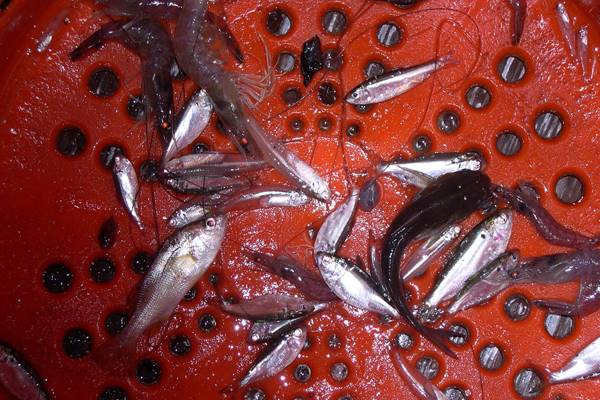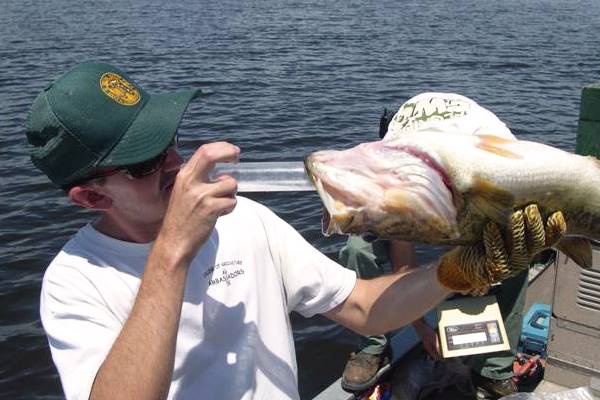Migrating menhaden key to St. Johns River’s famously productive bass fishery
It’s no secret that Florida’s slow-flowing St. Johns River is something of a bass factory, but a new study from state researchers sheds new light on what the fish are eating to grow so well.
The St. Johns River brings in bass anglers from all over, including stops from pro tournament circuits like the Bassmaster Elite Series. It also hosts the Wolfson Children’s Hospital Bass Tournament, one of the largest tournaments in the country, which drew more than 400 participants in 2014. Eelgrass, bankside trees and the river’s low gradient — it drops only 30 feet from its headwaters to its mouth at Jacksonville — make for productive largemouth habitat.
“Historically, it’s been one of the best bass fisheries in the state,” said Nick Trippel, a research associate with the Florida Fish and Wildlife Conservation Commission. “It produces a lot of big fish every year.”
But this research began not as a bass study but as a look into the river’s run of American shad. The St. Johns River is at the southern end of the shad’s range and once drew one of the largest runs along the Atlantic Coast. The run attracted anglers that filled up fish camps and derbies, but the shad population has crashed over the years.
“It’s just dwindled, and a lot of that is probably due to offshore commercial fishing,” said Trippel, who authored the study. “So we don’t know how important it was to the river.”

An example of the forage picked up in the trawls for the study. (Credit: Florida Fish and Wildlife Conservation Commission)
Researchers wanted to know what the impact the river’s predators might have on shad numbers, and whether the predators actively switch to preying on shad during the juveniles’ migration out of the river. But when electroshocking for predators turned up mostly largemouths and surface trawls for forage fish turned up hardly any shad, the researchers ended up with a study that looked a little different than what they expected.
The researchers’ surveys had given them data on which forage fish species were in the river seasonally and which species were in bass stomachs throughout the year. They were especially interested in forage species that were more abundant during their seasonal migrations and whether bass keyed in on them at that time.
But, of all the migratory forage species they looked at, only juvenile Atlantic menhaden became an important part of bass diets during their migration. It’s a smart choice for bass, as the menhaden are an energy-filled species.
“That nutrient-rich forage is probably a big factor in why (the river) is so productive,” Trippel said. “Basically, when the menhaden were in the river, all size classes of bass were predominantly feeding on menhaden.”

An example of how the researchers sample the bass stomachs before release them alive. (Credit: Florida Fish and Wildlife Conservation Commission)
Maybe just as interesting as what the bass did key in on is what they ignored. Trippel said the river gets a thick run of shrimp in the fall, for example. “We’d see shrimp everywhere in our samples, even when we were shocking for predators there were shrimp coming up everywhere,” Trippel said. The river’s anglers tend to think that when the shrimp are there, the best bet is to fish with shrimp or a lure that imitates it. But despite the abundance of shrimp in the river, the crustaceans weren’t turning up in bass stomachs.



0 comments